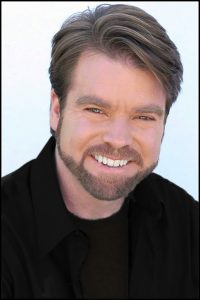
In 18th- and 19th-century Europe, salons functioned as gathering places for creators and intellectuals of different disciplines. In the parlors of generous hosts, artists would participate in a cross-pollination where painters, musicians, poets and patrons could all share ideas.
That collaborative spirit resonates with pianist Brian Zeger in multiple ways. He studied English literature in college, and draws great musical inspiration from the written word. Also, the majority of Zeger’s performances are as a collaborative pianist. He’s worked with many of the world’s most prominent vocalists, including Deborah Voigt, Marilyn Horne and Joyce DiDonato.
At 4 p.m. Saturday, July 7, in Elizabeth S. Lenna Hall, Zeger will collaborate with Kathryn Votapek and Michael Dean, all School of Music faculty members, for an afternoon recital titled, “The Romantic Salon: Brahms and Beyond.” Votapek will be taking the place of Karen Ritscher, who will not be performing due to an injury.
The program will open with four of Brahms’ lieder, or German art songs. The four that Dean selected are not usually performed together, as they all come from different, larger works. Dean has chosen to perform these four because, for him, the expressive content of the songs weaves together a narrative.


“As I was mulling it over in my head, I started seeing a story of a young man who had been away from home, and had decided that his life was not happy anymore,” Dean said. “After all these years, he wanted to travel back to his home to reunite with his beloved. On that journey, he became more and more excited about seeing her again, and then when he arrives, his beloved had married someone else.”
Art song, especially during Brahms’ era, is usually a musical setting of a pre-existing text, written by a poet—not the composer. The text inspired the music, and as a result, is an important element of the total artistic work. Unfortunately, for English-speaking audiences, most of the canonized art song repertoire is in a different language.
At a usual presentation of art song, the translated text would simply be printed in the program, but Dean finds it distracting to have to follow along with the text when one could be fully focused on the music.
As a solution, a student in the School of Music Voice Program will be reading the texts out loud in English before each song, as well as presenting the narrative that Dean has come up with for the four songs.
These four songs are also unusual for their time because of the pianist’s role in them, according to Zeger. Brahms uses the piano almost as an expressive equal to the singer, whereas many of his forebears used the piano only as an accompaniment, according to Dean.
After the set of four songs, Votapek will join Zeger for a performance of Brahms’ Viola Sonata in E at major, Op. 120 No. 2. This sonata, along with the other of Brahms’ two viola sonatas, were the last pieces of chamber music the composer would write before his death.
“You really get the sense that he’s at the end of his life,” Votapek said. “He’s had all these experiences, and he’s sort of looking back at the sum of all of them.”
While the second movement is a brilliant scherzo, she said, the outer movements are quite serene and retrospective. Similar to some of Beethoven’s late chamber music, Brahms ends this sonata with a theme and variation instead of a large, ashy finale.
“It’s a much more intimate way to close a piece,” Votapek said. “You can see that he’s not writing this piece for some big effect; he’s writing it because it comes personally from his heart.”
The concert will close with songs by George Gershwin, a lighthearted contrast to the first half of Brahms. Gershwin tended to straddle the line between classical and popular music, often blurring it. For example, all of the songs featured on this program are from Gershwin’s popular work, “An American in Paris.”
Many will be familiar with the movie adaptation of the piece, which is the source for these versions of the music, but it was originally composed as a standalone orchestra piece with no text. As a result, the songs have Gershwin’s characteristic jazzy style, using harmonies and melodies that mimic the popular music of the day — but they also have an orchestral richness and depth to them, as they were originally conceived for the concert hall.
“Brian Zeger and I just feel that because of (Gershwin’s) deep musical integrity and abilities as a composer, … his sensibilities certainly appeal to those of us who perform classical music,” Dean said. “I really feel that his songs have a place on the concert stage.”




